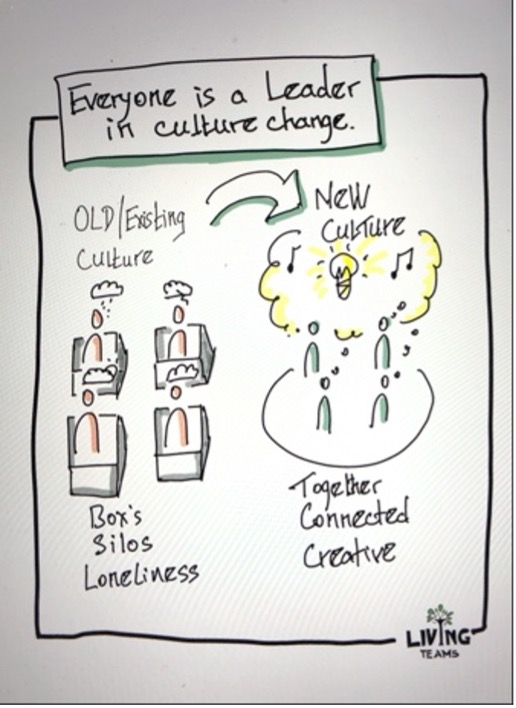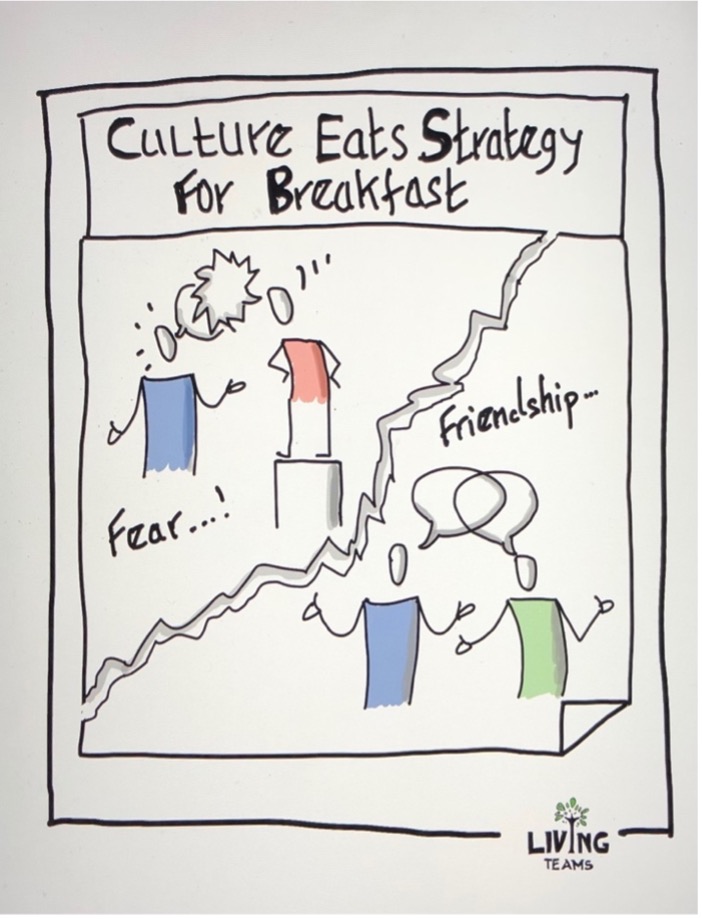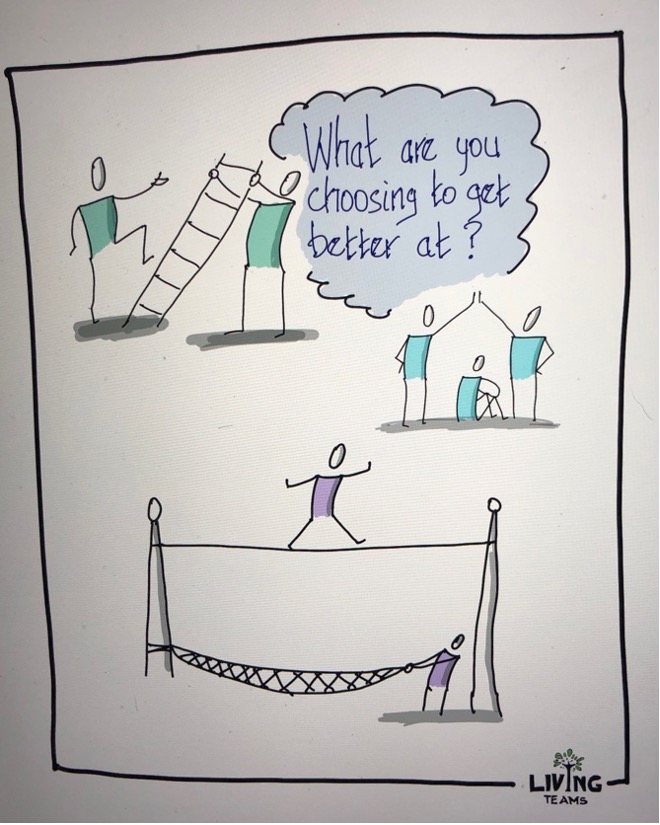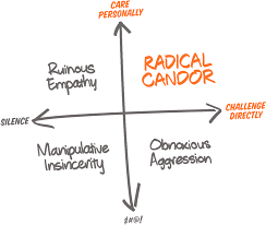SIGN UP
Join our newsletter mailing list!
We won't bombard you with nonsense, just light hearted, relevant & thoughtful content.
A little help from your friends
May Newsletter
A little help from your friends
Hello friends
Talking of friends – how about getting a little help from your friends?
These are challenging times and it’s a great idea to ask for help when you need it – or to offer help when you can sense it is needed.
The three articles we want to share with you this month are all about helping each other be better at what we do and who we are – as individuals and particularly as teams.
Pippa has been inspired to pass on the wisdom she learned from her 11-year-old daughter about the idea of choosing how much you want to be challenged rather than just toughing it out so you don’t look foolish or weak.
Andy talks about the need to recognise that if change is to happen then it starts with you – with small acts of cultural transgression. Surprise people with behaviours that are seen to be ‘different’ or ‘not the way we do things round here’ – find out more by reading Andy’s thought-provoking piece.
And I talk about the concept of ‘Radical Candour’ as a way of reinforcing the courage aspect of the Inner Condition framework – how can we directly challenge each other for the sake of achieving better results AND stay in great personal relationship with each other?
We all need some help from our friends to stay healthy in mind, body and spirit – don’t try and do it all alone.
Tony, Andy and Pip
The “Living Teams” Team

How do you create the culture you need for the future?
By Andy Denne
We are, all of us, culture creators.
Creating culture does not happen in a presentation, a power point slide deck, nor a training course.
Culture creation happens in the conversations you are in. With yourself, with others – one conversation at a time.
Culture is created one conversation at a time.
Culture is a reflection of the “stories” we share.
In order to build a new agile or versatile culture, you must be able to build it “within” the existing culture. It takes persistence and conscious awareness.
Culture defends itself from change – just as individuals do. A key tip to practice:
Embark on small creative acts of transgression.
They need to be small acts consistently taken over time. If you try to change a culture too fast – it resists.
Small acts can be :
- Show you care – by checking in with the team.
- Be direct and challenging about the quality of results you expect.
- Practice reminding people – 10 times more than you feel you need to – about “why” – about the purpose of your activities and why everybody’s effort matters
The acts must be creative not destructive.
How do you use your time and the time your team has together?
How do you ensure you and your team take time to recover, recharge and re-tune?
How do you use your time to be creative and think together?
How do you use your time as a team to build ideas and get into new action?
Your existing culture will resist this creative act. It will lean into the “story” that you don’t have time. Catch this old story and switch.
Acts of Transgression
The must transgress – rise above the current culture.
Think differently.
Run your meetings differently.
Do not stay in the comfort zone. Encourage everyone on the team to step into the learning zone.
Be more open minded. Be more compassionate. Be more courageous. Become more radically human together.
How good do you want to be?
We do not know about any other living being on earth, and we do know as humans we have imagination. By imagining the future, and moving into action we create it.
We create the experience we are having.
By our conversations – we create the culture together. Our conversations – the words we use and ideas we express – this is the bridge between our imagination and effective action.
Its not about how good you are. It is about how good do you want to be.

What culture are you creating?
How awake to the reality are you that we are each of us creating and contributing to the culture we are in. Nobody is a victim, leadership is a choice.
Fear or Friendship
Anxiety or Trust
Scarcity or Generosity
Your culture eats strategy for breakfast.
Your inner condition builds the culture.
- What are you choosing to get better at?
- What culture are you choosing to build?
- How do you actions align with your thoughts and your words?

Creative growth and transformation is a leadership stance.
It inevitably means embracing your fears.
Resistance, protecting the past, defensive denial, chaotic collapse are not the stance of leadership.
Create cultures where you stand together in creative growth and transformation.
It may feel scary, you might feel nervous. This means you are looking at the future openly. It means you are embracing your path of growth.
The “crackle” of aliveness follows.
The secret is to enjoy it!
Inner Condition with Radical Candor
By Tony Barton
The inner condition framework (derived from Otto Scharmer’s Theory U work) is at the heart of the work we do with teams.
If you’re not familiar with it, the essence is that the nature of our inner condition impacts everything!
Our inner condition is a function of our thoughts, our feelings and our actions.
Are we Open or are we Closed?
If I am closed in my inner condition, I am likely to be quick to judge, often cynical in the face of anything ‘new or unfamiliar’ and fearful of change and risk.
We’ve all been there right!
Whereas if I am open in my inner condition, I am more likely to be curious about the unknown, compassionate about diversity and courageous in the face of change and risk.
Take a look in the mirror where are you right now?
So where does ‘radical candor’ come in?
Often folks collapse an OPEN inner condition with being ‘nice, empathetic, respectful, caring’.
Nothing wrong with any of those qualities AND to ‘get shit done’ we have to find a way to turn that courage into action that makes a difference and that’s where radical candor comes in – it brings ‘edge’ into the equation and takes us out of the comfort zone into the growth zone.
Radical candor is the cavalry appearing at last on the horizon to save us from a world where everyone is lovely but nothing really important gets done!
Take a look at the framework.

And then watch Kim Scott explain it.
It’s a short video – only 6 minutes but if you get the importance of striving for an open Inner Condition in building great relationships in order to get shit done – I think you’ll really benefit from investing your time in watching it.
https://www.youtube.com/watch?v=YLBDkz0TwLM
And if you like it and want to take it into your team, here are some of her tips on how to start.
Create a Shared Vocabulary
Start by explaining the idea of Radical Candor and the 2×2 to your company in your own words. It is important to establish the shared vocabulary so that everyone can understand the goal and feel comfortable changing their behaviour.
Lead by Example
Tell your company that you think you have not been Radically Candid enough, and that you’re going to try to make a big change. By communicating that you want to improve, you’ll show your team that you’re serious about the cultural shift. Prove that you mean it by asking for their help. Ask them to rate your feedback — to tell you when they feel you are veering into one of the other three quadrants. Remind them, these are not labels for people, they are labels for behaviour.
By building a collaborative process, you’ll improve your own impromptu feedback quicker, and you’ll help your team see first-hand the impact of Radical Candor. When they see the improvements, they’ll also be encouraged to make the change themselves.
Commit to the Journey
You won’t become Radically Candid overnight, and it’s almost impossible to be Radically Candid 100% of the time. My experience with changing behavior is that I generally have to overshoot. In other words, if I’m convinced that my behavior is consistently Ruinously Empathetic, I’m probably going to have to feel like I’m being a real jerk before I get to Radical Candor. That is really uncomfortable. But if you’ve communicated to your team why you’re changing and asked them to rate your feedback, they’ll understand and help you improve.
The important thing is that you explain to your organization that you are going to start saying what you think a lot more clearly, and that you’re not doing it to be a jerk, or to hurt anyone’s feelings, you are doing it because you care about each person you work with personally, and you want to help them do the best work of their careers. And then walk the walk on that.
In short, go all-in yourself and continually involve your team. And remember that Radical Candor is HIP (Humble, Helpful, Immediate, In person, Private criticism/Public praise, not Personalized).

Challenge by Choice
By Pippa Handford
My 11-year-old daughter has just returned from a 3-night school trip.
She was rather apprehensive about going and she was especially concerned about some of the activities they had planned. She was feeling under pressure to participate as she didn’t want to be the only one not to.
As I waited to collect her upon her return, I was thrilled to see her jump off the coach beaming. She talked non-stop about her experience and proudly told me that she had participated in ALL the activities.
“I had a go at everything Mum!”
Naturally, I was very proud!
I asked how she overcame her fears about some of the activities and she told me about the ‘Challenge by Choice’ philosophy which the school had shared with them at the start of the trip.
‘Challenge by Choice’ allowed the children to have the choice to determine their own level of involvement in any given activity. Nobody was coerced to do anything they didn’t want to do.
By allowing the children to choose if, when, and how far they stepped outside their Comfort Zone, it also encouraged the children to be aware of their feelings, and for those that felt comfortable, they were asked to share those feelings with the group. They were asked to consider which zone they were in when they approached each activity.
Zone 1 – The Comfort Zone
Zone 2 – The Stretch Zone
Zone 3 – The Panic Zone
Throughout the trip, the children learnt to listen to each other and they also became a great source of encouragement and support as they challenged themselves and each other to enter their stretch zones. They also learnt to celebrate their successes.
“It felt amazing when I finally managed the zip wire. I was so scared but all my friends were cheering me on”
This is the power of the team, of belonging and of connection with others.
With the help of our team we are more likely to step beyond our comfort zone than we would by ourselves.
The magic of connection!
Honouring Challenge by Choice allows people to pull back from a challenge that may push them into their Panic Zone, and rather than pull out, invites them to find another role (hopefully within their Stretch Zone) that works for them.
It’s the difference between “You have to…” and “You are invited to…”
It feels a much more compassionate and inclusive way of working.
How can you adopt the ‘challenge by choice’ philosophy in your team?
- What’s currently in the stretch zone for your team?
- How can you help each other enter the stretch zone?
- And when you do, how do you want to celebrate progress?
My beautiful daughter has learned, with the help and support of her friends, that she can choose to step out of the comfort zone – and now she knows that that’s where the magic happens.
What a wonderful life lesson!
Challenge by choice – try it.
Living Teams Rock Moments
“With a little help from my friends” by the Beatles
What else could we choose for this month?
What a gift!

Every day is a new day with new opportunities to create the cultural waters we swim in so we hope that this newsletter has given you some food for thought as to how you can do that.
Stretch yourselves and make real what matters – with love and kindness.
We’d love to hear your stories.
See you next month.
Tony, Andy and Pippa
The “Living Teams” Team
